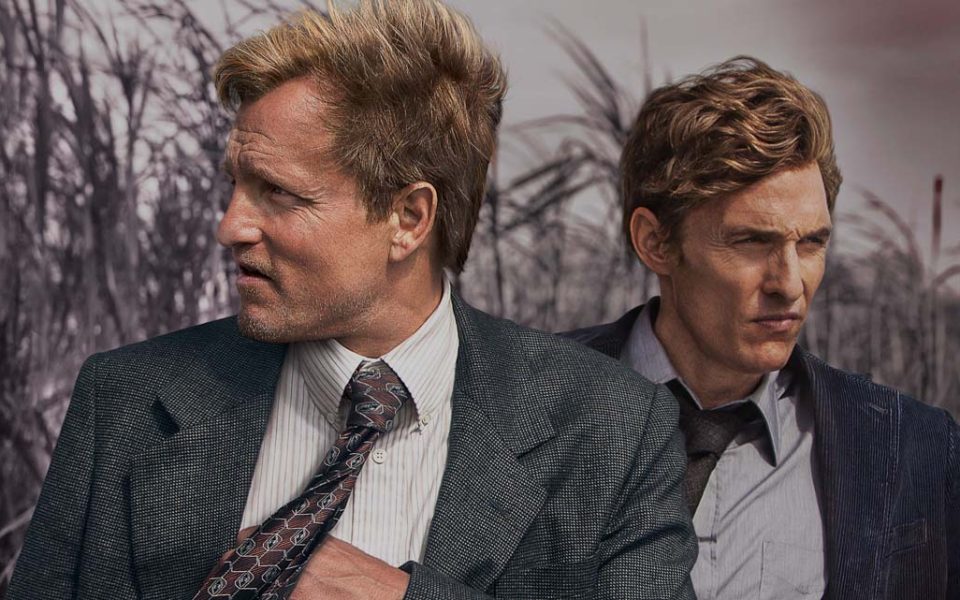by Brian Clarey
The season finale of “True Detective” airs Sunday night at 9 p.m. on HBO.
The world has changed so much since 1993: A black man is president of the United States, the cell phone has become a pocket computer and pornography is basically free, unless you want some of the specialty stuff.
But perhaps the most surprising development of them all is the evolution of Matthew McConaughey.
If you had told me in 1993 that the creeper from Dazed and Confused would become one of the finest actors of his generation, I might have done a spit-take with my Zima. But here we are.
I did not watch the Oscars on Sunday night, when McConaughey accepted his Best Lead Actor award for his role as Ron Woodroof in Dallas Buyers Club, mainly because I don’t really like Hollywood movies (shh!), but also because I wanted to watch him in what has become appointment television in an age when there really is no such thing.
The DVR, by the way, is one of those things that in 1993 would have completely blown me away.
The TV folks out there know I’m talking about “True Detective,” the most recent and perhaps most ambitious piece of serialized storytelling put out under the HBO banner that can only be described as “groundbreaking.”
Yeah, yeah, I know: It’s all groundbreaking, from “Game of Thrones” to “Mad Men” to “The Walking Dead.” Even “Under the Dome” has been pronounced as groundbreaking, though we all know the best part of that show came in the first episode, when the dome came down and cut a cow in half.
But “True Detective” actually does break new ground. The smart, literary narrative could have been written by Faulkner, with its Southern-gothic tapestry of washed-out bayous, unkempt and weaponized trailer parks and wanton alcohol abuse.
Like The Sound and The Fury, “True Detective” uses flashback, visual cues and other devices that bring it into the territory of artistic drama — rare for what is basically a buddy-cop show as tired a trope as there is.
“True Detective” is subtle, an appellation I never thought I would use to describe a work by the man who in 1994 starred in The Texas Chainsaw Massacre: The Next Generation, let alone Woody Harrelson who I still remember as the simpleton from “Cheers,” which has also been describes as “groundbreaking” enough times to stall out my Google.
McConaughey plays Rust Cohle, a cop with a shadowy past and obsessive nature capable of delivering soliloquys on the meaninglessness of life, alcohol abuse, interpersonal relationships or the origins of evil, all while sucking down what look to be the most delicious cigarettes ever rolled.
That’s his tell, by the way. McConaughey has come a long way since the Wooderson days, but you’ll notice that the manchild from Dazed and Confused smokes the same way as Rust. It’s the only throughline in his work.
McConaughey could have easily pulled a Swayze — that is, cashed in on his abs and churned out shallow action and romance pics with occasional supporting-role plums and some ambitious projects that still missed the mark of what could be termed serious work. And don’t bring up Point Break. Point Break was mostly stupid, and any redeeming properties it had are wiped out by the scene from Roadhouse, when a shirtless, oiled-up Swayze practiced tai chi on the banks of a slow-moving river.
McConaughey instead has executed a prolonged version of the Spicoli, named for Sean Penn’s progression from the burned-out antihero of Fast Times at Ridgemont High to whatever he is today.
It took longer for McConaughey to achieve the sort of acclaim that Penn had heaped upon him just a year after Fast Times came out, 1983, with the lead in the teen prison flick Bad Boys. But McConaughey seems less the worse for wear than Penn, whose criminal record and personal history indicates some sort of prolonged angst.
Even at 44, McConaughey has better abs.
Join the First Amendment Society, a membership that goes directly to funding TCB‘s newsroom.
We believe that reporting can save the world.
The TCB First Amendment Society recognizes the vital role of a free, unfettered press with a bundling of local experiences designed to build community, and unique engagements with our newsroom that will help you understand, and shape, local journalism’s critical role in uplifting the people in our cities.
All revenue goes directly into the newsroom as reporters’ salaries and freelance commissions.


Leave a Reply